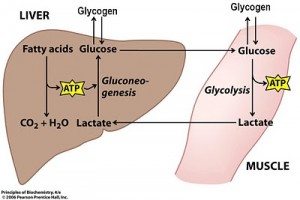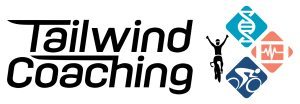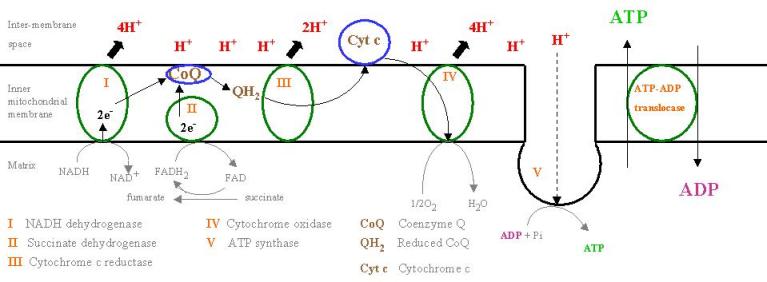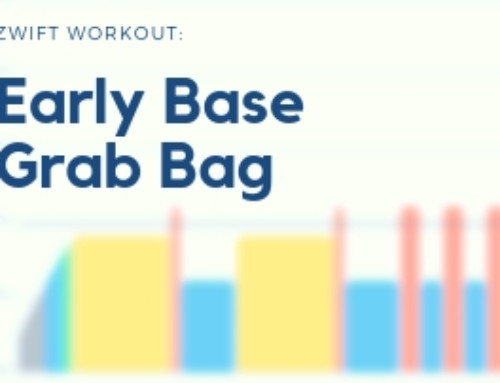Lactic acid. The burn. The chemical that Phil and Paul always talk about “filling up the legs” and “making the legs scream in agony.” It gets a bad rap, one that it perhaps doesn’t deserve. Little do most athletes know, it can not only be a key way to enhance your performance, but it may very well be required by the body to fuel your brain and contribute to various chemical reactions within the body. Biohacking lactic acid will help you improve your cycling performance.
How can this improve your cycling performance?
Easy. For simplicity’s sake (as an overview) here’s the gist of it: The more time you spend creating lactic acid, the more your body will be forced to deal with. That causes a cascade of metabolic changes in the body. But how does dealing with lactic acid get you further? How does your body do it? How can we use those lactic acid idiosyncrasies to be faster cyclists?
We’ll look at a couple of ways to hack lactic acid after the jump, and after we understand how it’s produced and cleared.
Click through the jump to see how it works (warning, sciencey, geeky stuff ahead):
Increased Lactic Acid Production and Clearance
How many articles have you read that blames lactic acid for “the burn” that you feel when you push yourself to the ragged edge of performance? How many times have you heard the phrase “legs filling with lactic acid, burning horribly…” and simply believed it (I even used it in this article!)
Guess what? Lactic acid (otherwise known as lactate) is innocent. That muscle burn has almost nothing to do with lactic acid at all. In reality, the formation of acidic “sodium lactate” salts really don’t contribute to muscle tissue acidosis as much as the free protons created when ATP is metabolized for energy. Let’s look at the electron transport chain again to understand a little bit of this:
If you’ll take a look at the top of the diagram, you’ll note that for each NADH -> NAD+ and FADH2 -> FAD reduction reaction at the bottom, the hydrogen (simply a proton) is pumped out of the mitochondrial matrix into the intermembrane space. That hydrogen is shuttled through the inner membrane into the mitochondrial matrix where it used in oxidative phosphorylation to make ATP. The hydrogen created from the reduction of NADH and FADH2 is not the only proton source in the body. Protons from other sources are also utilized by ATP Synthase in order to regenerate ATP. But where else do we get hydrogen from and what does it have to do with acidosis?
Well, this is what happens in various parts of the cell: water hydrolyzes an ATP molecule, splitting it apart and creating energy in the process. The resultant products are ADP (which will be phosphorylated in the mitochondrial matrix in the steps above) and an inorganic phosphate (to be used in a number of places, including in the phosphorylation of ADP as noted above) along with energy and an acidic H+ ion or proton. When the cellular demand for ATP (to power muscle contractions) is met by the mitochondrial respiration, which is a fancy way of saying that would be that electron transport chain we saw above is not at full capacity, there’s no net proton accumulation in the cell.
Basically, this means that when you have sufficient mitochondrial efficiency (which could be considered the equivalent of “fitness”) it’s much harder to build up protons in your intermembranous space, which causes tissue acidosis. When you outstrip the capacity of the mitochondria to supply fresh ATP (generally due to lack of oxygen, insufficient transport protein capacity of the ETC or lack of enzyme availability from the ETC), anaerobic pathways kick in, hydrolyzing ATP for energy and those free protons build up and create a “burning” acidosis.
It all works because as we hydrolyze/break down ATP for energy, it’s constantly being renewed by those protons that are pumped into the matrix of the mitochondria. It’s one huge recycling process.
Do you notice that there’s nothing to do with lactate in there? That’s because lactate can actually REDUCE tissue acidosis. Yeah, I said it…
 The reason lactic acid gets a bad rap is because as you move into anaerobic metabolism, you burn up more glucose, and burning up glucose requires NAD+ (Nicotinamide Adenine Dinucleotide), which is supplied by *SURPRISE* lactic acid production. Take a look at the diagram to the left. You’ll notice that glucose is broken down into 2 pyruvate at the cost of 2 NAD+, leaving you with 2 NADH and 2 protons. The next step of reducing pyruvate to lactate actually consumes those protons that would otherwise be floating around in the cellular matrix. So lactic acid production is something that actually mediates the proton concentration of the cellular matrix. If lactic acid indeed contributed to intermembranous acidosis, in the presence of lactic acid acidosis would increase at an exponential rate (increased proton production = more easily overwhelmed mitochondria.)
The reason lactic acid gets a bad rap is because as you move into anaerobic metabolism, you burn up more glucose, and burning up glucose requires NAD+ (Nicotinamide Adenine Dinucleotide), which is supplied by *SURPRISE* lactic acid production. Take a look at the diagram to the left. You’ll notice that glucose is broken down into 2 pyruvate at the cost of 2 NAD+, leaving you with 2 NADH and 2 protons. The next step of reducing pyruvate to lactate actually consumes those protons that would otherwise be floating around in the cellular matrix. So lactic acid production is something that actually mediates the proton concentration of the cellular matrix. If lactic acid indeed contributed to intermembranous acidosis, in the presence of lactic acid acidosis would increase at an exponential rate (increased proton production = more easily overwhelmed mitochondria.)
It just so happens that increased lactic acid coincides with intermembranous acidosis and this fact makes it a good marker of metabolic shift. However, it doesn’t mean that lactate is a bad thing; far from it. It can actually be used by the body to create fuel in a process called gluconeogenesis, which happens back in the liver and involves yet another biochemical cycle, and your brain can actually run on lactate if need be.
Furthermore, there’s a contribution to muscle tissue acidity from K+ (potassium). K+ is a positively charged ion that “leaks” from the cell cytoplasm during intense muscle contraction can contribute to the acidification of the intracellular fluids. Interestingly, there is some evidence that lactate can actually increase the contractile force of muscles that are bathed in a hyperkalemic solution. Of course, these are in vitro studies, not in vivo, but the potential mechanism exists.
And yet another of the important uses of lactate is to rebuild glycogen in our liver, which happens at rest or during low-intensity exercise. That deserves its own discussion:
The Cori Cycle
Since our bodies have evolved to be self-correcting, self-contained capsules that are able to power themselves via countless chemical reactions, there’s got to be a way for the body to utilize the lactate that we produce. It turns out, there is, and it sits right under your right ribs, and it’s a hackable process that we can utilize to make even MORE energy for our cells. In a nutshell, high-intensity interval training can help the body become efficient at shuttling lactic acid back into the liver, where the Cori cycle processes it back into glucose.
 The very same glucose that your body breaks down for energy.
The very same glucose that your body breaks down for energy.
Let’s looks at the process:
- Lactate is converted to pyruvate via lactate dehydrogenase (Requires NADH)
- Pyruvate is carboxylated into oxaloacetate. (Requires 1 ATP and pyruvate carboxylase, which is stimulated by high levels of acetyl-CoA from β-oxidation and inhibited by high levels of ADP or glucose)
- Oxaloacetate is reduced to malate (in order to shuttle it out of the mitchondria. This requires NADH.)
- Malate is oxidized into oxaloacetate in the cytosol of the cell (requires NAD+)
- Oxaloacetate is decarboxylated and then phosphorylated to form phosphoenolpyruvate. (Requires phosphoenolpyruvate carboxykinase and a molecule of GDP)
- The rest of the cycle is a reverse mirror of glycolysis with a few exceptions noted below:
- Fructose-1,6-bisphosphate is converted to fructose-6-phosphate via Fructose-1,6-bisphosphatase using water and releasing an inorganic phosphate. (Rate limiting step)
- Fructose-6-phosphate is converted to glucose-6-phosphate via phosphoglucoisomerase. (G6P can be used in other reactions or dephosphorylated into glucose. This is partly how our body controls blood sugar: G6P is locked in the cell, glucose is easily diffused into the blood.)
- Glucose-6-phosphate is hydrolyzed by glucose-6-phosphatase to create glucose, which is shuttled into the body for use.
The take home of this process is that high amounts of β-oxidation along with decreased blood glucose and an increase in lactic acid production can stimulate this pathway and the enzymes within. So when you include a variety of high-intensity work (or those isometric exercises I’ll talk about in a minute) you increase lactic acid and start the Cori Cycle in action. The biggest downside to this process is that it takes 6 ATP to complete, so it’s only really able to happen at sub-threshold efforts. In addition to Cori Cycle stimulation, you also deplete glycogen (and ATP) in muscle tissue, which activates the enzyme AMPK and stimulates mitochondrial proliferation.
Keys to Biohacking Lactic Acid Beastliness
Ok, so now we have a good, thorough understanding of what goes on in lactate production, metabolism and how it is actually beneficial to our body. With that understanding, we can figure out a few ways to hack that system and gain performance out of this “byproduct.” However, bear in mind that these interventions will not generally create a “night and day” difference in your performance. What they will likely do is give you an extra 1/2% or 1% performance gain at some of the higher intensities you may find within your races, fondos or group rides. Make no mistake, even 1/2% is worth a look at. Consider that people spend $3,000 for a pair of wheels that will shave 100 grams from their bike and maybe 2 seconds off their 10-12 minute climbing time.
Actually, in that light, these interventions might just be a bargain (and they are.)
Oxaloacetate
If you’re not at all versed in chemistry, you may not be familiar with the concept of “rate limiting” steps. Basically, as you can see above, reactions happen in a series of “steps” in our cells, and the speed at which the overall reaction occurs (in our example above, the speed at which lactate is converted to glucose) is limited by the slowest step in the chain. That is the “rate limiter.” In much of the body, rate limiters are put in place to maintain homeostasis in a normally functioning organism. As athletes, we’re not really normally functioning, but hopefully optimally functioning, so we need to “cheat” a little bit.
The most significant rate limiter in the Cori Cycle is the conversion of NAD (Nicotinamide Adenine Dinucleotide) into NADH (Nicotinamide Adenine Dinucleotide Hydrogenase). It just so happens that research in the Journal of the Federation of American Societies for Experimental Biology has shown that acute exposure to oxaloacetate enhances resistance to fatigue. It purportedly does this by increasing the conversion rate of NAD to NADH as well as providing an increase in the intermediary substrate in the lactic acid pathway.
So, if you want to use this little tidbit of knowledge to your advantage, you can take a 100mg or 200mg of supplemental oxaloacetate about a half hour before a high intensity workout to further stimulate these pathways. You can also pop those oxaloacetate tabs before a strength training workout and really get the burn flowing if you want. The biggest benefit of “hacking the burn” is the hormetic effect of increasing buffering enzymes and compounds in the body in response to high proton/acid load.
You can get
Isometric Exercise
Isometrics are a secret weapon for endurance training, without doing hours of endurance training. What what WHAT? Yep, that’s been found to be the case in a few studies, such as this one about blood pressure and mean arterial BP.
Isometric exercise is a type of exercise that involves no gross movement of the joint, however still involves significant muscle contraction (imagine doing squats against a wall.) This is in contrast to normal isotonic exercise which involves joint movement (which is what most of your normal riding is.) If you’ve ever done wall squats, you’ll be familiar with the agonizing burning sensation in your quads while you quiver and fight to stay upright against the wall. That’s lactic acid, and that’s free performance right there, because the more you build up an acidic condition in the muscles (increased proton production) the more buffering enzymes you’ll produce, which will help you tolerate proton build up during exercise.
As I briefly discussed above, an enzyme called AMPK stimulates your body to build new mitochondria. This enzyme is stimulated when exercise is undertaken, and there is research out there that demonstrates greater activation of AMPK with high intensity exercise. It also happens to be increased when enhancing the function of the Cori cycle and with energy depletion in the cell (interestingly enough, carbohydrate and calorie restriction cause AMPK to be up-regulated as well. More on that in a future post.) Isometrics are heavily depleting on ATP stores, causing a buildup of AMP (Adenosine Mono Phosphate) and in turn activating AMPK. By performing a couple of sets per week of isometrics, you get a low impact training stimulus that builds lactate tolerance and stimulates AMPK to increase mitochondrial density. You can tolerate more acidity in the muscles, you have more mitochondria to produce energy, you can process more fuel and create more ATP within the cell, and ultimately, you can store and preserve more ATP and glycogen in each cell. That’s a win in so many ways with very little time commitment or input.
Wrapping Up Biohacking Lactic Acid
So, now that you have the understanding of the lactic acid cycle and some of the ways to hack it for better performance, what are you going to do? Are you going to add a few isometrics to your workout routine? Are you going to hit the oxaloacetate before your strength workout? Are you going to head out and do some lactate tolerance intervals?
Post up your plans and your questions on the Tailwind Coaching Facebook Page and tell us how you’re going to be a lactate processing monster.






